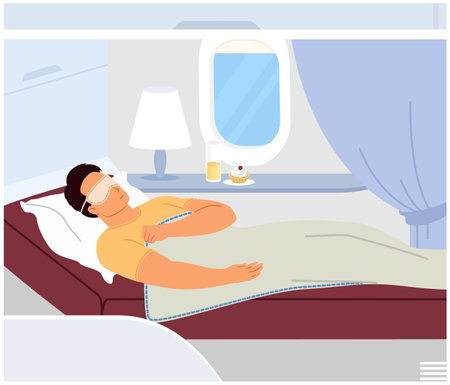1. Understanding the Science Behind Napping
Napping is more than just a midday indulgence—it’s a powerful tool for physical and mental recovery, rooted in our biology. To truly optimize your nap, it’s helpful to understand how naps interact with sleep cycles and circadian rhythms. Our bodies naturally experience a dip in alertness during the early afternoon, typically between 1:00 and 3:00 PM, thanks to our internal biological clock, or circadian rhythm. This is why a well-timed nap can feel so restorative.
Research shows that even brief naps can enhance memory, creativity, mood, and overall cognitive performance. The key lies in aligning your nap with your body’s natural rhythms and understanding the stages of sleep you might enter during a short rest. For example, a 10–20 minute nap keeps you in lighter stages of non-REM sleep, which helps boost alertness without grogginess. Longer naps may allow you to reach deeper stages of sleep or even REM sleep, which have their own benefits for emotional processing and physical restoration but can sometimes leave you feeling sluggish if you wake up at the wrong time.
Recent studies published in American journals like “Sleep” and research from institutions such as Harvard Medical School highlight that strategic napping can lower stress hormones, support heart health, and improve reaction times—benefits especially relevant for busy Americans juggling work, family, and self-care. By tuning into both scientific insight and your own bodily cues, you can use naps as an intentional practice for balance and rejuvenation.
Finding Your Prime Nap Time
Choosing the ideal moment for a nap can make all the difference between feeling rejuvenated or groggy. In the rhythm of American daily life, where schedules are often packed from morning to evening, understanding your bodys natural energy cycles helps you optimize the benefits of a short rest. Most people experience a natural dip in alertness during the early afternoon, typically between 1:00 PM and 3:00 PM. This is not just coincidence—its tied to your circadian rhythm, which regulates your sleep-wake patterns and energy levels.
To help you pinpoint your perfect nap window, consider both your unique routine and these general guidelines:
Time of Day |
Best For |
Notes |
|---|---|---|
| 11:00 AM – 12:30 PM | Early risers, shift workers | Ideal if you start your day before 6:00 AM or have an early lunch break |
| 1:00 PM – 3:00 PM | Most adults (typical workday) | Counters post-lunch energy slump; fits well with common American work schedules |
| 3:00 PM – 4:30 PM | Night owls, students | Works if you tend to stay up late or have afternoon classes/meetings |
For most Americans working a standard 9-to-5 job or managing family life, aiming for a nap in the early to mid-afternoon will likely align best with both biological needs and practical realities. If you notice your energy consistently waning at a certain hour, listen to those cues—your body is signaling its need for restoration. By finding your prime nap time and honoring it, you can boost focus, mood, and overall resilience throughout the rest of your day.

3. Creating a Restful Nap Environment
Setting up the right environment is essential to unlock the full restorative power of your nap, even if you’re surrounded by the hustle and bustle of daily life. Whether you’re at home or sneaking in a quick break at work, the right space can help you transition from alertness to deep relaxation with ease.
Find Your Calm Corner
If possible, choose a quiet corner away from high-traffic areas—think a spare bedroom, a cozy nook, or even your parked car. If you’re in an office setting, consider using a wellness room or a dedicated break area. The goal is to signal to your body that this is a safe, restful space.
Minimize Distractions
Turn off notifications on your phone or put it in Do Not Disturb mode. Use earplugs or noise-canceling headphones to block out unwanted sounds. Some people find that playing soft white noise, gentle rain sounds, or calming music helps mask background chatter and supports relaxation.
Create Comfort
Bring along a small pillow or travel blanket to make yourself comfortable. If you’re napping at your desk, try reclining your chair and resting your head on folded arms or a supportive cushion. Consider using an eye mask or closing blinds to keep the light low—a darker environment tells your brain it’s time to rest.
Add Calming Touches
Aromatherapy can enhance the experience: lavender, chamomile, or sandalwood essential oils are known for their relaxing properties. Just a drop on your pillow or wrist can help cue your mind for rest. If temperature control is possible, aim for a cool (but not cold) room—somewhere between 65 and 70°F is ideal for most people.
Embrace Imperfection
Remember, you don’t need perfect silence or total darkness to benefit from a nap. Sometimes simply taking five minutes to close your eyes and focus on your breath can reset your energy and mood. By intentionally designing your nap space—even in small ways—you invite calm into your day and support deeper recovery.
4. How Long Should You Nap?
When it comes to napping for maximum recovery, duration is everything. The length of your nap can determine whether you wake up feeling refreshed or groggy. Let’s break down the most effective nap lengths and when to use each for optimal well-being and energy.
Power Naps vs. Longer Sessions
Power naps—typically 10 to 20 minutes—are ideal for a quick mental reboot. This short window keeps you in the lighter stages of non-REM sleep, making it easier to wake up alert and clear-headed. Power naps are perfect when you need a gentle boost during a busy workday or before a late-afternoon meeting.
On the other hand, longer naps, lasting around 60 to 90 minutes, allow your body to complete a full sleep cycle, including deeper slow-wave and REM sleep. These longer sessions are best when you’re recovering from sleep debt, jet lag, or intense physical activity. They offer deeper restoration but require more time and can increase the risk of sleep inertia (that groggy feeling upon waking) if you interrupt the cycle.
Ideal Nap Durations at a Glance
| Nap Duration | Benefits | Best For |
|---|---|---|
| 10-20 minutes | Boosts alertness, enhances mood, easy wake-up | Quick refresh at work or school |
| 30-45 minutes | Some cognitive benefit but higher risk of grogginess | If you have extra time but want to avoid deep sleep |
| 60-90 minutes | Full sleep cycle, memory consolidation, deep recovery | Catching up on lost sleep or post-workout recovery |
The Takeaway: Match Your Nap to Your Needs
If you’re looking for a mindful pause in your day and need a quick lift, keep your nap short and sweet—under 20 minutes is your best bet for staying balanced and energized. Reserve longer naps for days when your body truly needs deeper healing. By tuning into what your body needs most in the moment, you’ll discover the power of rest as an essential part of your daily routine.
5. Making Naps a Healthy Habit
Building a mindful nap routine is about more than just finding time to rest—it’s about creating a ritual that supports your whole self. Start by setting a consistent nap window in your daily schedule, ideally early to mid-afternoon when energy dips are natural. This timing aligns with your body’s circadian rhythm and helps avoid disrupting nighttime sleep. Treat your nap like an appointment: silence notifications, draw the shades, and let others know you’re taking a short break for self-care.
Mindful Pre-Nap Rituals
Before your nap, slow down with a calming activity. Try deep breathing, gentle stretches, or simply sitting quietly for a few minutes. This transition prepares your mind and body to relax fully and maximizes the benefits of your nap. You might even keep a gratitude journal nearby—jotting down a few things you’re thankful for can create positive mental space as you drift off.
Tips for Integrating Naps into Your Day
- Keep naps short (10–30 minutes) to boost alertness without grogginess.
- Use a comfortable eye mask or soft background music to set the mood.
- If you work from home, designate a cozy corner as your nap zone; if you’re at the office, consider using a reclining chair or even resting in your car if appropriate.
Napping for Well-Being and Productivity
When approached mindfully, regular naps become more than just “catching up” on sleep—they become part of your toolkit for resilience and productivity. Over time, you’ll notice improved focus, mood stability, and greater emotional balance throughout your day. By honoring this simple yet powerful practice, you support not only recovery but also creativity and joy in everyday life.
6. Troubleshooting Common Nap Challenges
When Sleep Won’t Come: Easing into Rest
It’s not uncommon to find your mind racing just as you try to nap. If falling asleep feels impossible, start by practicing deep, mindful breathing or a simple body scan meditation. Gently remind yourself that even just resting quietly with your eyes closed can be restorative—there’s no need to force sleep. Consider a consistent pre-nap ritual, like listening to calming music or diffusing a favorite essential oil, to signal your body it’s time for gentle rest.
Shaking Off Post-Nap Grogginess
Waking up feeling foggy or even more tired is frustrating but fixable. This grogginess, also known as sleep inertia, often results from napping too long or waking during deep sleep. Aim for the sweet spot: 10–20 minutes for a quick refresh, or 90 minutes for a full cycle. After waking, expose yourself to natural light, stretch, and sip a glass of water—these small rituals can help ground your energy and bring clarity back gently.
Letting Go of Nap Guilt
If you feel guilty about taking time for a nap, remember: prioritizing self-care isn’t lazy—it’s wise and necessary. Many Americans face cultural pressure to “push through” fatigue, but honoring your body’s signals is an act of balance and resilience. Reframe your perspective by viewing naps as a tool for better focus, mood, and health. Remind yourself that high performers—from athletes to CEOs—routinely use napping as part of their recovery toolkit.
Real-Life Solutions for Everyday Barriers
- Busy schedule? Try “power naps” during lunch breaks or right after work before evening plans.
- Noisy environment? Use white noise apps or soft earplugs to create a peaceful bubble anywhere.
- Anxious mind? Practice gratitude journaling for a minute before lying down—shifting focus can help release tension.
Your Gentle Reset
Napping is not about perfection—it’s about tuning in to your needs and responding with kindness. With patience and mindful adjustments, you can transform common nap hurdles into opportunities for deeper self-awareness and well-being.


